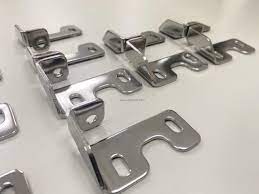Lifting, in the realm of construction and civil engineering, isn’t just about hoisting heavy objects; it’s about ensuring safety, stability, and durability. To achieve these crucial elements, leveraging innovative materials like geogrids has become instrumental. This article delves into the world of lifting, exploring the importance of geogrids and their applications in enhancing structural integrity.



What is Lifting in Construction?
Lifting refers to the process of raising and positioning heavy loads or structures during construction or infrastructure development. Cranes, hoists, and various lifting equipment are utilized to elevate materials like steel beams, concrete panels, and machinery to designated heights or locations.
Why is Structural Strength Important in Lifting?
The integrity of structures during lifting operations is paramount. Weakness or instability can lead to catastrophic consequences, jeopardizing worker safety and causing financial setbacks. Reinforcing structural strength ensures stability and reduces the risk of collapse or damage during lifting procedures.
What Are Geogrids and How Do They Enhance Lifting Operations?
Geogrids are synthetic materials comprising polymers like polyethylene or polyester. Their unique open-grid design reinforces soil, aggregate, or other construction materials. In lifting, geogrids are employed to increase load-bearing capacity, reduce soil erosion, and enhance the stability of foundations.
Where Are Geogrids Utilized in Lifting Applications?
Geogrids find diverse applications in lifting operations. They reinforce soil beneath foundations, retaining walls, and embankments, preventing soil movement during lifting. Additionally, geogrids are employed in slope stabilization, road construction, and landfills, fortifying structures against the forces exerted during lifting and transport.



Geogrids in Lifting Applications:
Geogrids play a pivotal role in enhancing structural integrity during lifting operations. Their applications extend to various sectors:
- 1. Foundation Reinforcement: Geogrids fortify soil beneath foundations, providing stability and preventing settlement during lifting procedures.
- 2. Retaining Wall Construction: By reinforcing soil behind retaining walls, geogrids bolster structural stability, crucial during lifting heavy loads adjacent to walls.
- 3. Road and Pavement Construction: Geogrids reinforce base layers, reducing rutting and enhancing load-bearing capacity, vital in lifting machinery and materials on roadways.
4. Slope Stabilization: In lifting operations on sloped terrains, geogrids prevent erosion, maintain slope stability, and ensure safety.
In the domain of lifting, the significance of structural strength cannot be overstated. Geogrids serve as indispensable tools in fortifying structures, preventing soil movement, and enhancing stability during lifting operations. Their versatile applications across construction and civil engineering projects underscore their crucial role in ensuring safety and durability in lifting heavy loads. Incorporating geogrids into lifting strategies is not merely an option but a necessity for maintaining structural integrity and safety standards.
